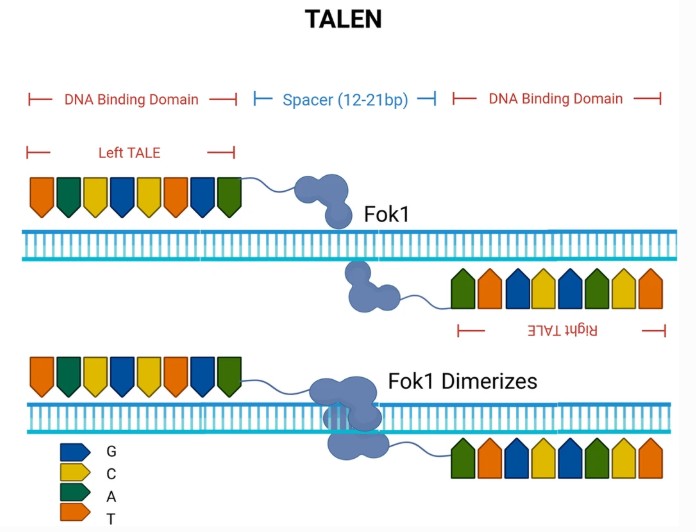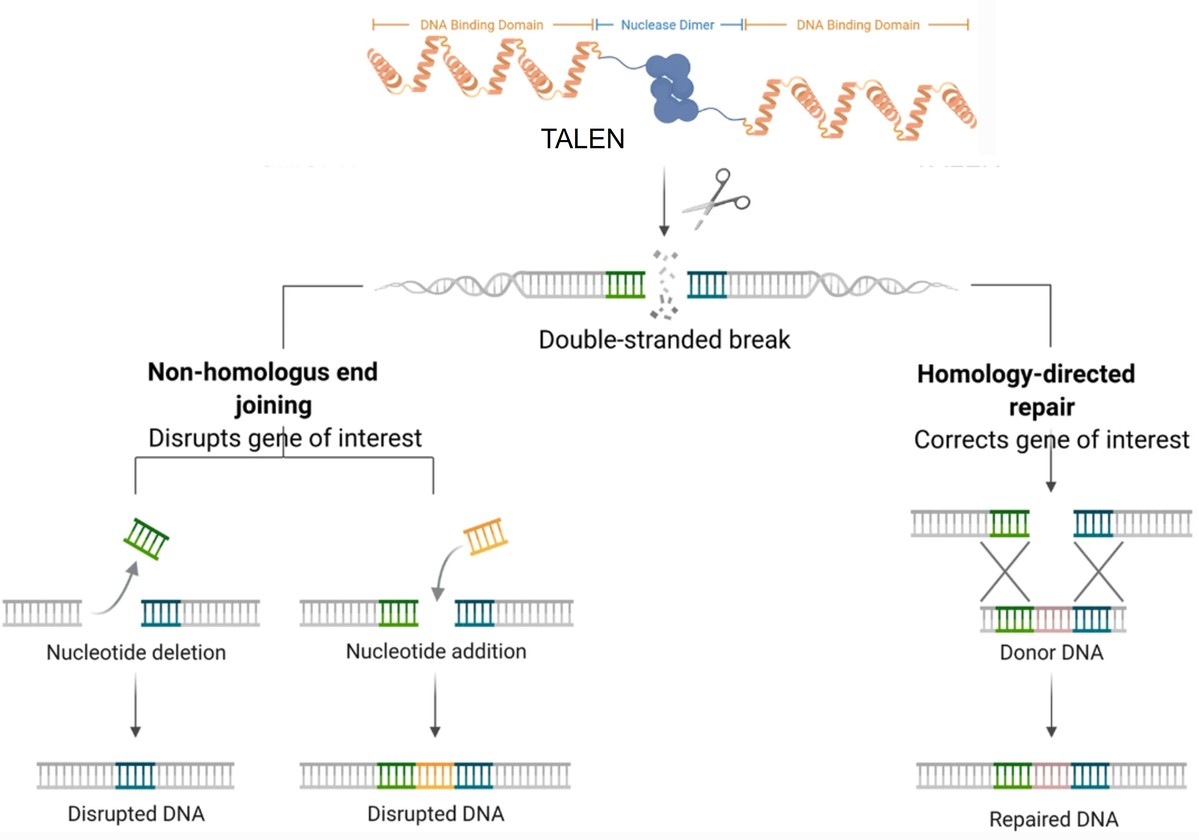TALENs: Precision Gene Editing for Research & Therapeutics
While CRISPR-Cas9 dominates today's headlines, another powerful genome editing technology—TALENs (Transcription Activator-Like Effector Nucleases)—continues to demonstrate unmatched precision and versatility. This article provides a deep dive into TALENs' molecular mechanism, unique advantages, and broad applications in research, therapeutics, agriculture, and industrial biotechnology.
TALENs: Precision in the Landscape of Genome Editing
Genome editing technologies have revolutionized life sciences by enabling researchers to manipulate DNA with unprecedented accuracy and efficiency. Among these tools, CRISPR-Cas9 has become the household name. Yet, in parallel, TALENs remain a cornerstone technology whose modular design and exceptional specificity make it indispensable for applications requiring surgical precision.
If CRISPR is often likened to a powerful "gene scissors," then TALENs can be seen as a master-crafted scalpel, offering fine-tuned control in contexts where accuracy and safety are paramount. In this article, we explore the scientific principles, competitive strengths, and diverse applications of TALENs in modern biotechnology.
How TALENs Work: Engineering the "Molecular Scissors"
TALENs are chimeric proteins composed of two functional domains:
(a) DNA-Binding Domain: TALE Proteins
- Derived from Xanthomonas plant pathogens, TALE proteins naturally recognize specific DNA sequences.
- Each TALE protein is modular, consisting of repeated amino acid motifs.
- Recognition specificity is dictated by a pair of variable residues known as repeat-variable diresidues (RVDs).
- By assembling different TALE repeats like "Lego blocks," researchers can design proteins that bind almost any desired DNA sequence.
(b) DNA-Cleavage Domain: FokI Nuclease
- FokI is a non-specific endonuclease that cleaves DNA when dimerized.
- In TALENs, FokI is fused to the custom TALE protein, converting DNA binding into site-specific cleavage.
 Fig1. Schematic illustration of mode of action of genome editing nuclease
Fig1. Schematic illustration of mode of action of genome editing nucleaseWorkflow of TALEN-Mediated Editing
1. Target Binding: A pair of TALENs is engineered to bind opposite DNA strands, flanking a defined spacer region.
2. Dimerization & Cleavage: When both TALENs bind, their FokI domains dimerize and induce a double-strand break (DSB).
3. DNA Repair Pathways:
- Non-Homologous End Joining (NHEJ): A rapid but error-prone repair mechanism, often resulting in insertions or deletions that disrupt gene function.
- Homology-Directed Repair (HDR): In the presence of a donor template, cells can repair with high fidelity, enabling precise insertions, corrections, or replacements.
This "dual-key" system—requiring both TALENs to act in tandem—substantially enhances specificity and safety, reducing the risk of off-target mutations.
 Fig2. Talen working mechanism. Schematic illustration of genome editing nucleases inducing double-strand break (DSB) in target DNA. DSBs activate the DNA repair pathways: the error-prone nonhomologous end joining (NHEJ) or accurate but template dependent homologous recombination (HR).
Fig2. Talen working mechanism. Schematic illustration of genome editing nucleases inducing double-strand break (DSB) in target DNA. DSBs activate the DNA repair pathways: the error-prone nonhomologous end joining (NHEJ) or accurate but template dependent homologous recombination (HR).Why TALENs Still Matter in the CRISPR Era
Although CRISPR is widely praised for its simplicity and low cost, TALENs offer distinct technical and regulatory advantages:
Exceptional Specificity
- TALENs recognize longer DNA sequences (12–20 bp), minimizing accidental off-target binding.
- By comparison, CRISPR guide RNAs are shorter and can sometimes tolerate mismatches, increasing off-target risks.
- For clinical gene therapy, where safety is paramount, TALENs are often the preferred option.
Broader Targeting Range
- CRISPR systems require a PAM sequence (e.g., NGG for SpCas9), limiting target availability.
- TALENs are not restricted by PAM requirements, enabling access to GC-rich regions and "difficult-to-edit" loci.
Compact Gene Size
- TALEN constructs are relatively small, making them easier to package into delivery vectors such as adeno-associated viruses (AAVs).
- This is a major advantage, since AAVs have limited carrying capacity but remain the gold standard for in vivo gene delivery.
Clear Intellectual Property Landscape
- CRISPR technologies are mired in patent disputes, creating legal uncertainty for commercialization.
- TALENs, in contrast, have a more stable patent framework, providing biotechnology companies with a safer environment for therapeutic and industrial development.
Applications of TALENs: From Bench to Bedside
Disease Modeling & Drug Discovery
- TALENs enable precise insertion of disease-associated mutations into stem cells or cell lines.
- These models help uncover disease mechanisms and provide platforms for high-throughput drug screening.
Gene Therapy
TALENs have already reached clinical and preclinical pipelines:
- Inherited Genetic Disorders:
- Companies like Sangamo Therapeutics pioneered TALENs and ZFN approaches for diseases such as β-thalassemia and sickle cell disease, aiming to repair mutations in patient-derived hematopoietic stem cells.
- Cancer Immunotherapy:
- TALENs are used to engineer "universal" CAR-T cells by disrupting endogenous T-cell receptors (TCRs) and human leukocyte antigen (HLA) genes.
- This innovation reduces risks of graft-versus-host disease (GvHD) and enables off-the-shelf CAR-T production.
- Cellectis has been a leader in advancing TALEN-engineered CAR-T therapies into clinical trials.
- Featured CAR-T therapy target proteins
| Cat.No. | Product Name | Source | Speices | Tag |
|---|---|---|---|---|
| GPC3-2551H | Active Recombinant Human GPC3 protein, His-tagged | HEK293 | Human | His |
| EGFR-30H | Active Recombinant Human EGFR, His-tagged | HEK293 | Human | His |
| EPCAM-81H | Recombinant Human EPCAM, Fc tagged | HEK293 | Human | Fc |
| CD33-459H | Recombinant Human CD33 Molecule, Fc Chimera | HEK293 | Human | Fc |
| CD274-592H | Recombinant Human CD274 protein(Met1-Thr239), His-tagged | HEK293 | Human | His |
| CA9-256H | Recombinant Human CA9 protein, His-tagged | HEK293 | Human | His |
| TNFRSF8-642H | Active Recombinant Human TNFRSF8, Fc-His tagged | Human Cells | Human | Fc&His |
| IL1RAP-175H | Recombinant Human IL1RAP, Fc-His tagged | Human Cells | Human | Fc&His |
| EGFR-692H | Recombinant Human EGFR, Fc Chimera | HEK293 | Human | Fc |
| PDCD1-822H | Active Recombinant Human PDCD1, His tagged | HEK293 | Human | His |
| ERBB2-922H | Recombinant Human ERBB2, His tagged | Human Cells | Human | His |
Agriculture & Plant Biotechnology
- TALENs facilitate precision breeding of crops with enhanced resistance to pathogens, drought tolerance, or improved nutritional content.
- Because TALEN edits often mimic natural mutations and do not always involve transgenes, such crops may face less regulatory scrutiny compared to GMOs.
Industrial Biotechnology
- TALENs optimize microbial metabolic pathways to improve yields of biofuels, specialty chemicals, and pharmaceutical precursors.
- By enabling precise reprogramming of yeast or bacteria, TALENs support sustainable biomanufacturing.
Challenges and Future Perspectives
Historically, TALENs' main limitation has been the labor-intensive design and assembly process compared to CRISPR. Constructing TALE repeat arrays required sophisticated cloning techniques, slowing adoption.
However, these challenges are being rapidly addressed:
- Advances in DNA synthesis and automated assembly platforms now allow high-throughput generation of TALEN libraries.
- Improved computational tools streamline TALEN design, lowering costs and accelerating turnaround times.
Looking ahead, TALENs and CRISPR are likely to be seen not as competitors, but as complementary technologies. A hybrid approach—using CRISPR for rapid functional screening and TALENs for final therapeutic-grade editing—may become a common strategy.
Conclusion: Choosing Precision, Choosing TALENs
TALENs combine modularity, precision, and reliability to occupy a permanent place in the genome editing toolkit. Far from being overshadowed by CRISPR, they remain the method of choice when accuracy and safety are non-negotiable.
Related Products & Services
- Cell and Gene Therapy
- Targets of CAR-T Cell Therapy
- ADC Target Protein
- Protein Engineering Services
- Protein Expression and Purification Services
- Stable Cell Line Services
Resource
- Cas9 Enzyme: A Revolutionary Tool Ushering in a New Era of Life Sciences
- Traditional Gene Manipulation Technologies and Zinc Finger Nucleases (ZFNs)
- Cas9 Protein: Unveiling the "Molecular Scissors" of Gene Editing
- The Big Three of Gene Editing: ZFNs, TALENs & CRISPR - Understand Their Differences and How to Choose
-
Unlocking the Power of Cas9: The Future of Genetic Science
-
Unlocking CRISPR-Cas9: The Gene Editing Revolution
-
CRISPR-Cas9: Revolutionizing Genetic Science!
-
ZNFs: The Precision Tools of Gene Editing
-
Why TALENs Still Beat CRISPR for Precision Gene Editing!
-
CRISPR vs. TALEN vs. ZFNs: The Ultimate Gene Editing Battle!
Reference
- Bhardwaj, A., & Nain, V. (2021). TALENs—An indispensable tool in the era of CRISPR: A mini review. Journal of Genetic Engineering and Biotechnology, 19(1), 1-10. https://doi.org/10.1186/s43141-021-00225-z
Contact us or send an email at for project quotations and more detailed information.
Quick Links
-

Papers’ PMID to Obtain Coupon
Submit Now -

Refer Friends & New Lab Start-up Promotions

